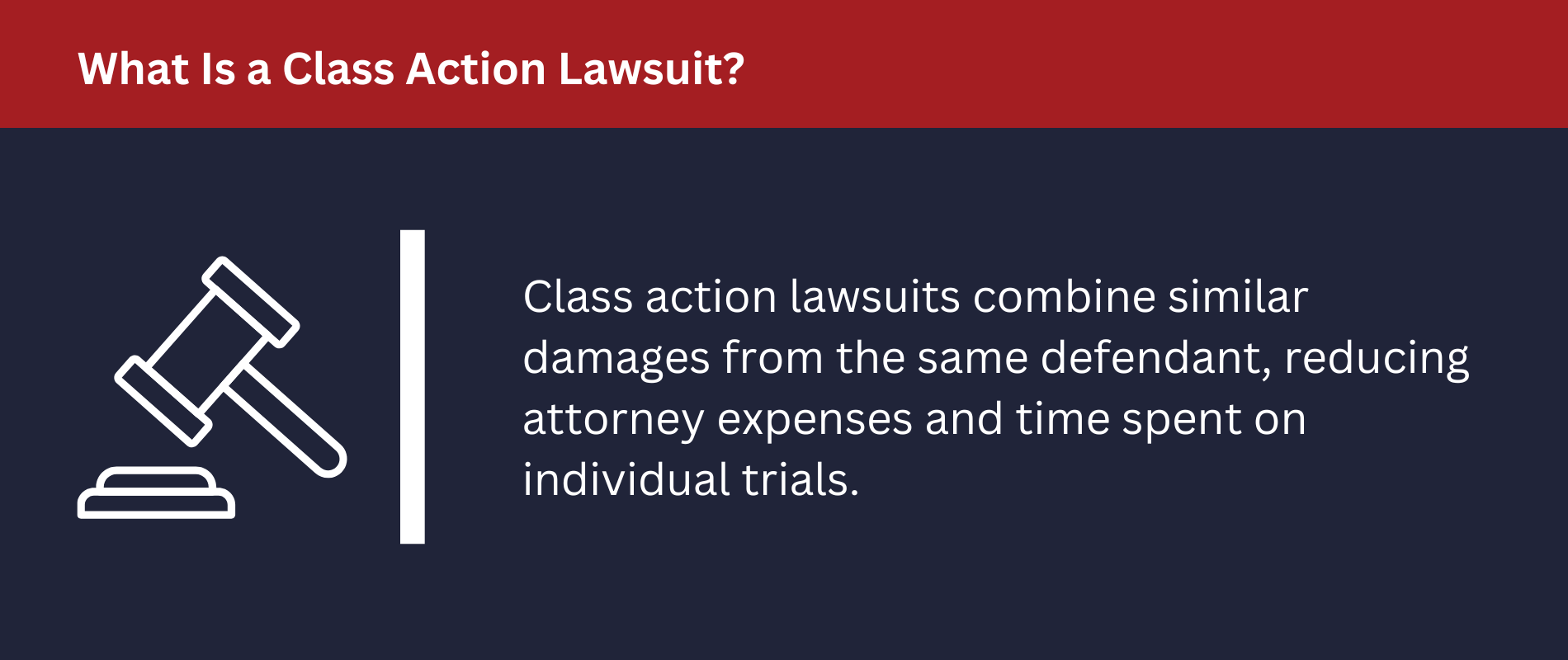
Are you wondering if a class action is the same thing as a mass tort? Mass torts and class actions have many things in common. However, there are also important differences between them.
While both of these case types involve numerous plaintiffs making injury claims against the same defendants, the law treats the people involved quite different between the two case types.
The main difference between these two types of lawsuits is the amount of control a plaintiff has over the case. The case type that’s more like a traditional personal injury case is a mass tort case; each plaintiff is dealt with as an individual in the lawsuit.
Mass torts are usually smaller than class actions and include fewer plaintiffs. This means that mass tort plaintiffs have more input into the lawsuit’s direction than class action plaintiffs.

In class action lawsuits, each plaintiff has similar damages from the same defendant. For example, a bank might charge illegal fees of about $50 to millions of its customers. Each customer has suffered a similar damage: they have been charged an illegal fee. It wouldn’t be worth the expense and time for an attorney to bring a $50 lawsuit for all the customers. Instead, the customers can combine their claims into a single class-action lawsuit.
Plaintiffs in class action lawsuits are collected together in a class. These plaintiffs are represented by one or a small number of plaintiffs. Rather than each member of a class having their own trial, class actions let issues be settled for a whole class in a single suit. One or a small number of lawyers can try the entire case, making things a lot more affordable than every individual hiring their own lawyer.
You can, but a group of individuals who were harmed similarly can’t simply file a class-action lawsuit. What constitutes a class and what classes can file lawsuits for are dictated by the Federal Rules of Civil Procedure.
Under Rule 23, a class must be big enough that it is impractical or impossible to join every member in a smaller lawsuit. Every plaintiff’s claims need to involve the same questions of fact or law. The plaintiff named class representative needs to bring the same claim that the rest of the class brings and must adequately and fairly protect the class’s interests. Class representatives cannot have conflicts of interest.
Classes can only file class-action lawsuits when a risk exists that inconsistent results would arise from individual lawsuits. In the illegal bank fees example, two customers could sue, but one might win and one might lose. This isn’t fair, and the law wants every individual filing the same claim to be treated the same.
Classes may also sue if they seek a court order that would be appropriate for the entire class, or if issues of fact or law relating to the whole class are the primary case issues, overwhelming individual plaintiffs’ unique issues.

Mass tort lawsuits are individual cases that are tried within proceedings that are consolidated. Mass tort lawsuits don’t have a single representative that speaks for every injured party. Mass tort cases are tried individually.
Mass tort cases usually begin as single personal injury cases. Lawyers can ask the Judicial Panel on Multidistrict Litigation to consolidate cases together in multidistrict litigation (MDL). The lawyers need to demonstrate there are numerous actions in multiple federal districts involving one or several common questions of fact.
When this request is granted, it centralizes every case related to the injury type, medication, or product related to a single defendant or multiple defendants. The primary advantage to this is seen during the discovery process, as it is very inefficient for 5,000 lawyers to request the same documents from the same defendant. One judge oversees general discovery in consolidated MDL proceedings.
Examples of mass tort lawsuits include:
Paraquat causing Parkinson’s disease
Zantac causing cancer
Defective Philips CPAP machine lawsuits
Similac and Enfamil baby formulas causing necrotizing enterocolitis
Toxic baby food causing autism and ADHD
Firefighting foam causing cancer
Mass torts and class actions involve procedural differences, as well as varying litigation processes and outcomes. Classes in class action lawsuits aren’t typically updated on the details that class representatives are since they don’t need to be involved. Every case in a mass tort can be in a different position during litigation. Courts require that every case be dealt with the same way, at the same speed.
Settlements in class actions are typically negotiated for the entire class. Mass tort settlements are usually negotiated individually. Trials in class action lawsuits usually involve only the class representative participating. Mass tort cases are handled individually, with every injured party being able to present their own evidence, argument, and experts.
Nadrich Accident Injury Lawyers represent mass tort clients on a contingency fee. This means that the only fee we charge is a percentage of any financial compensation we obtain for our clients. We do not charge our clients a fee unless or until we obtain financial compensation for them, so our clients never owe us any money out of their own pockets.
This means that you have nothing to lose by calling us or contacting us online for a free consultation if you think you may qualify for a mass tort lawsuit.

